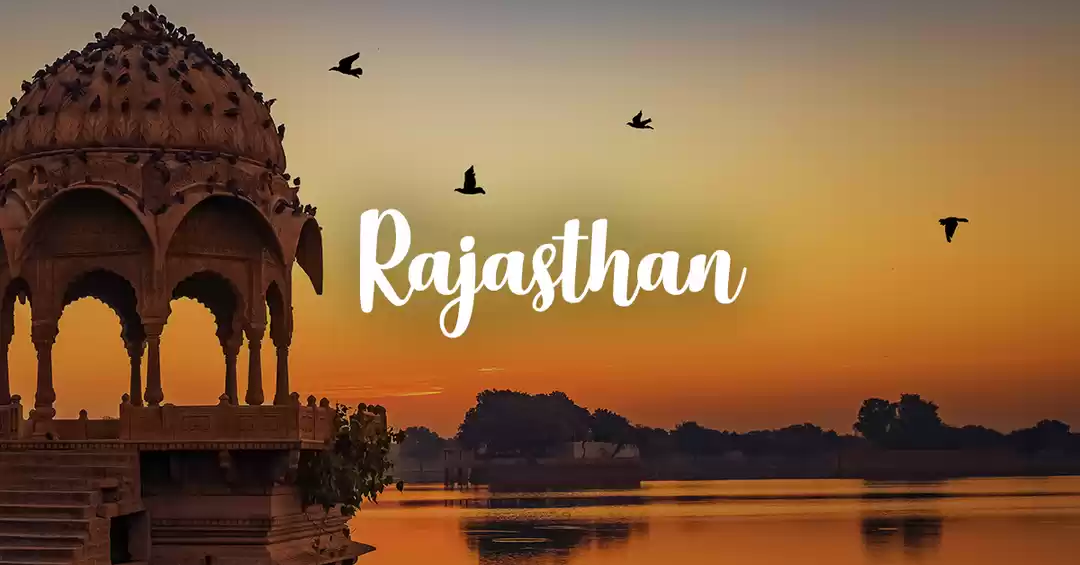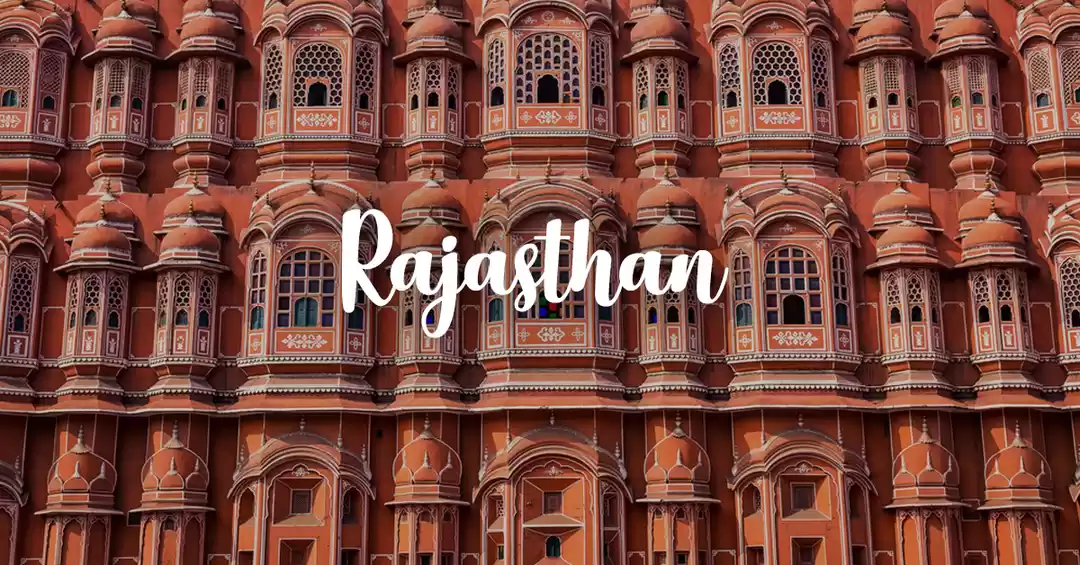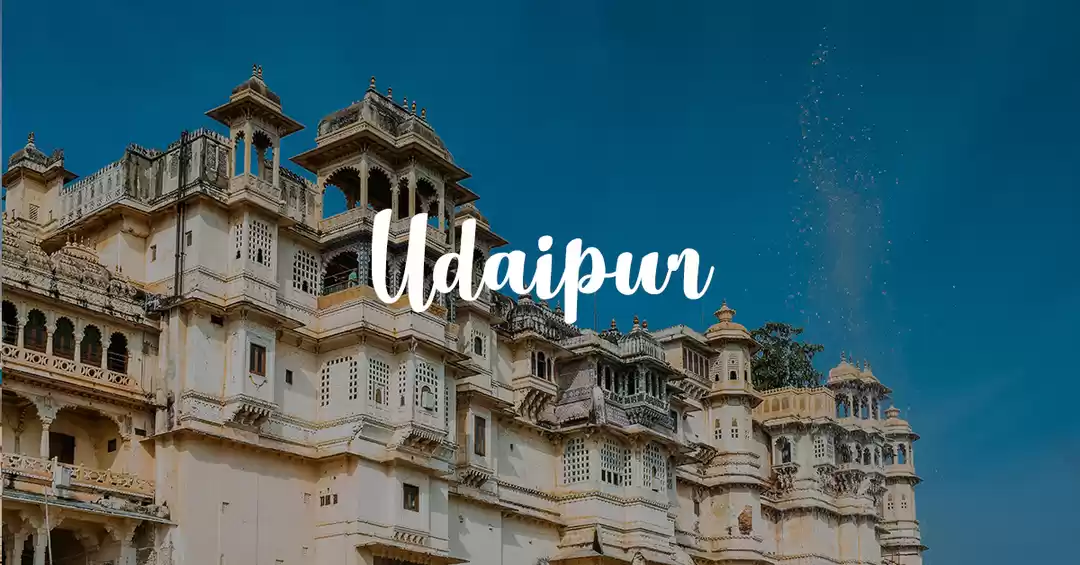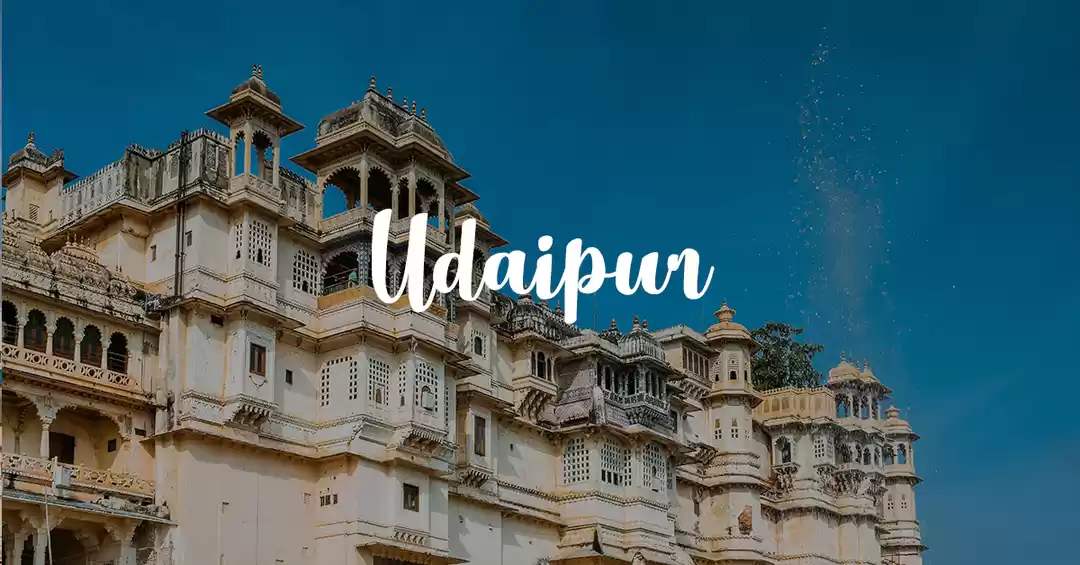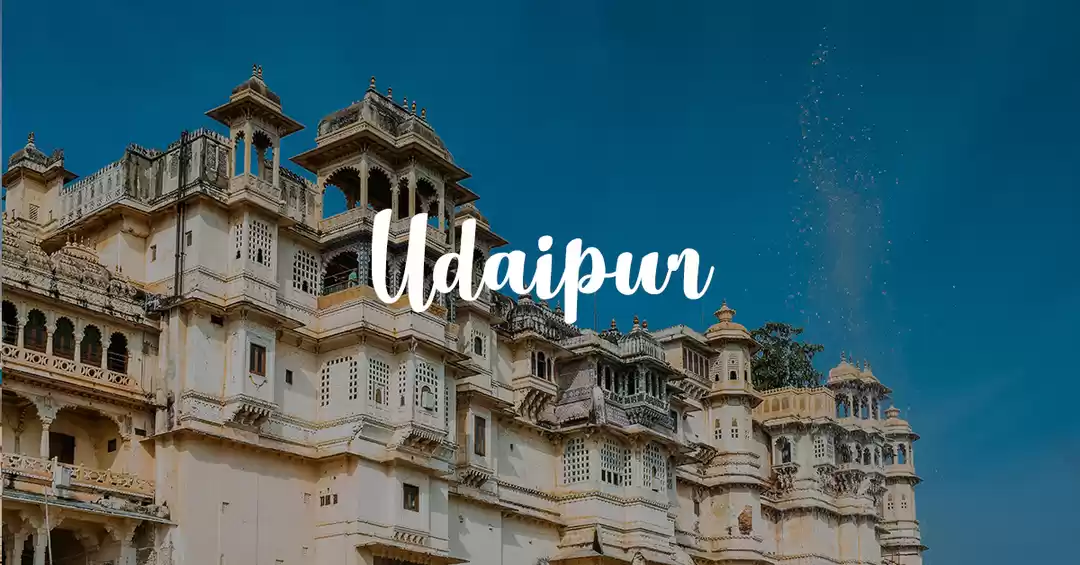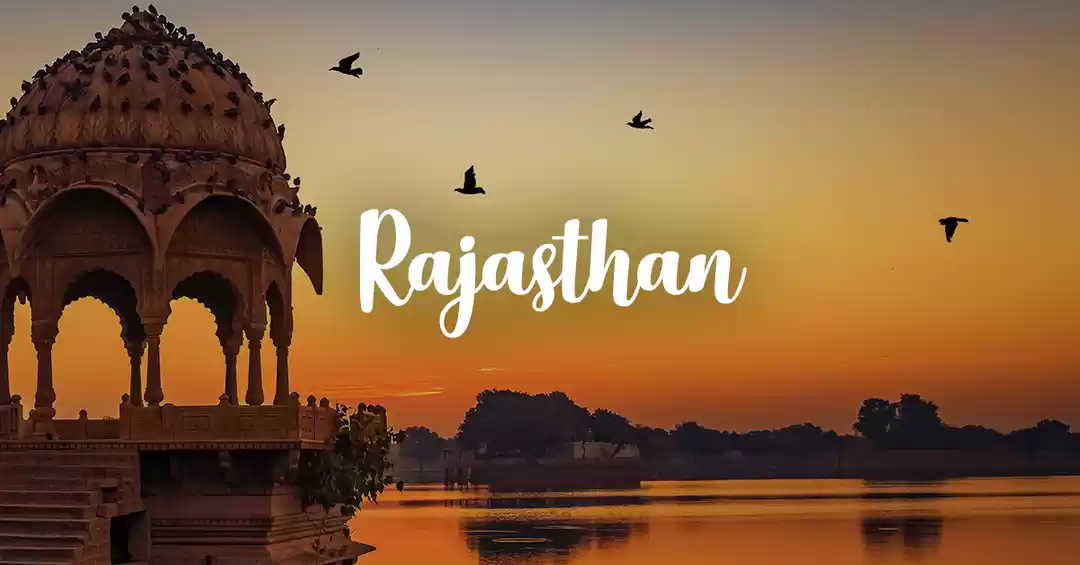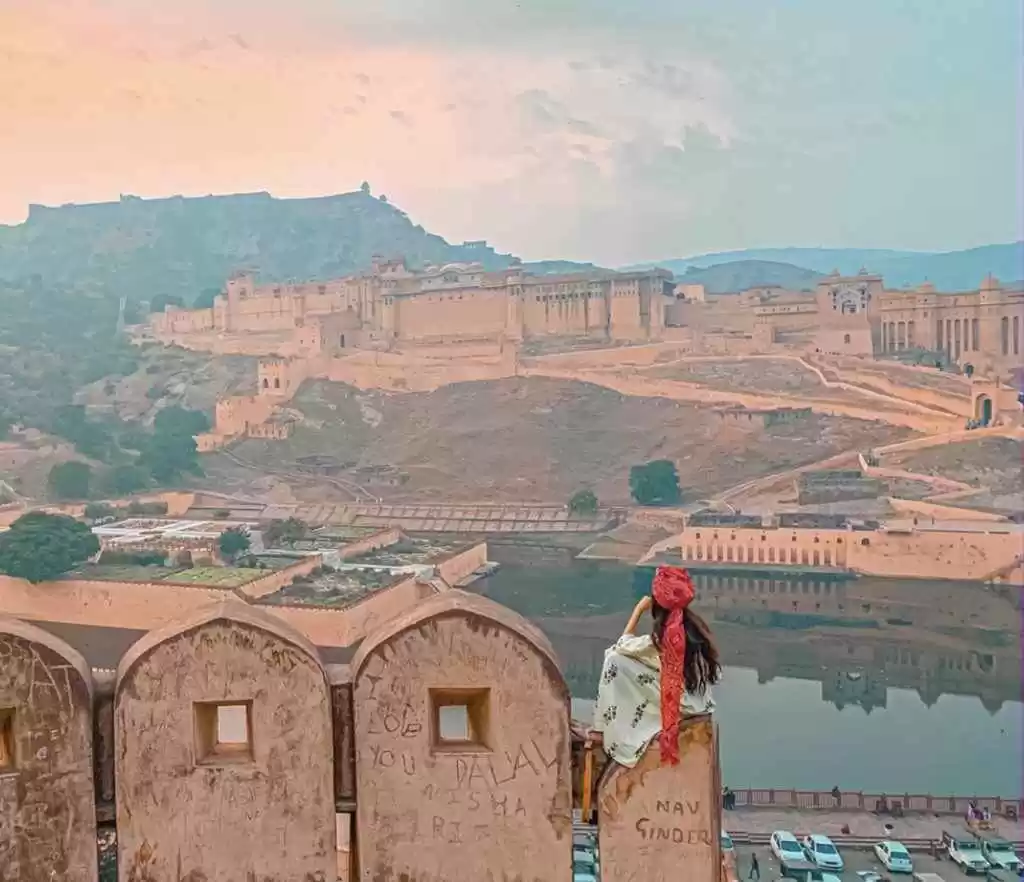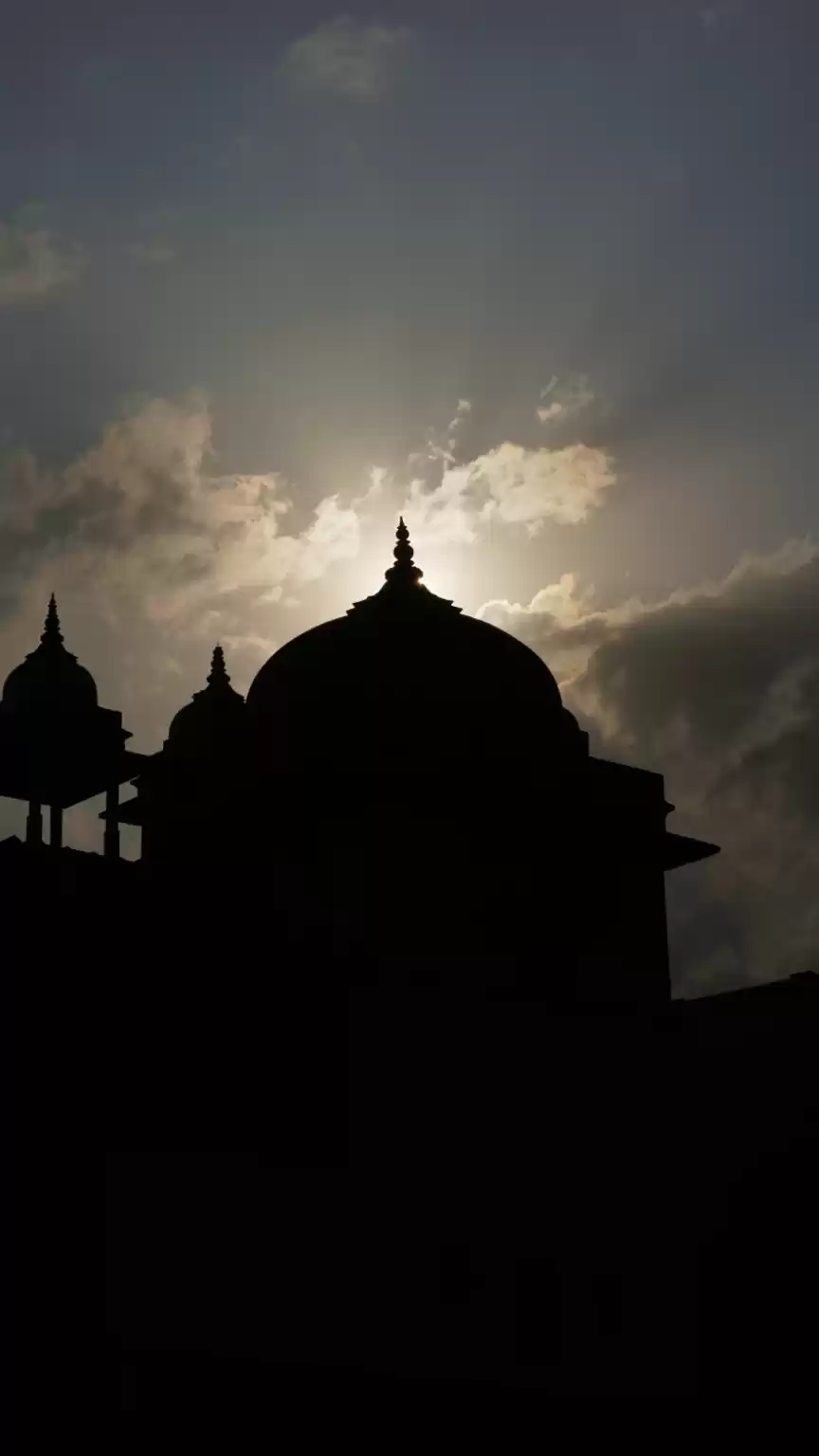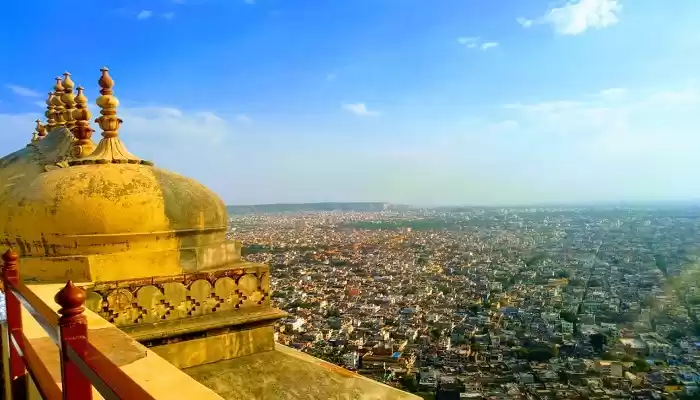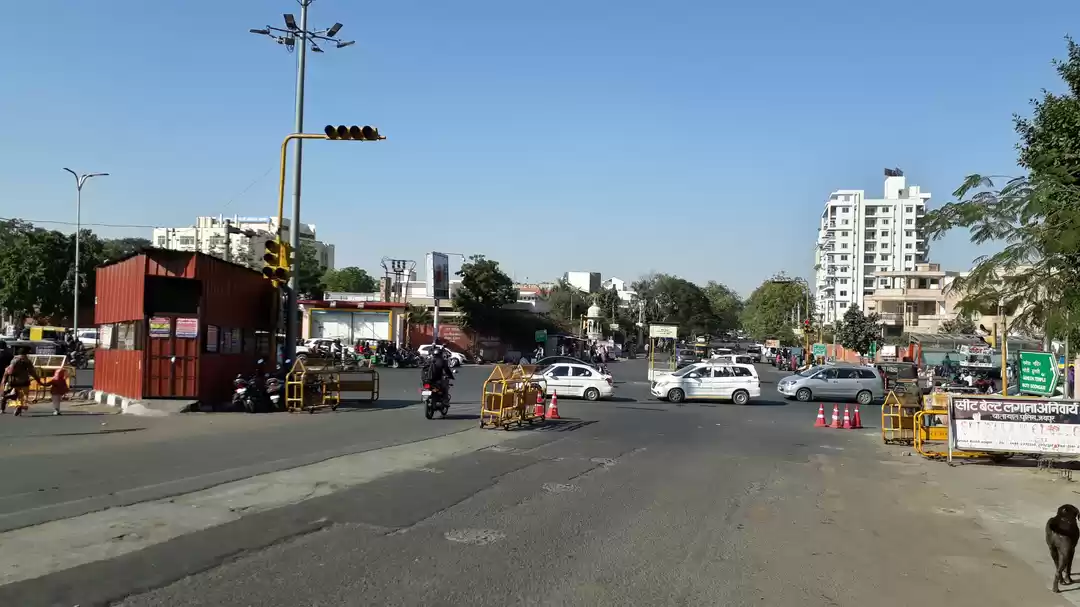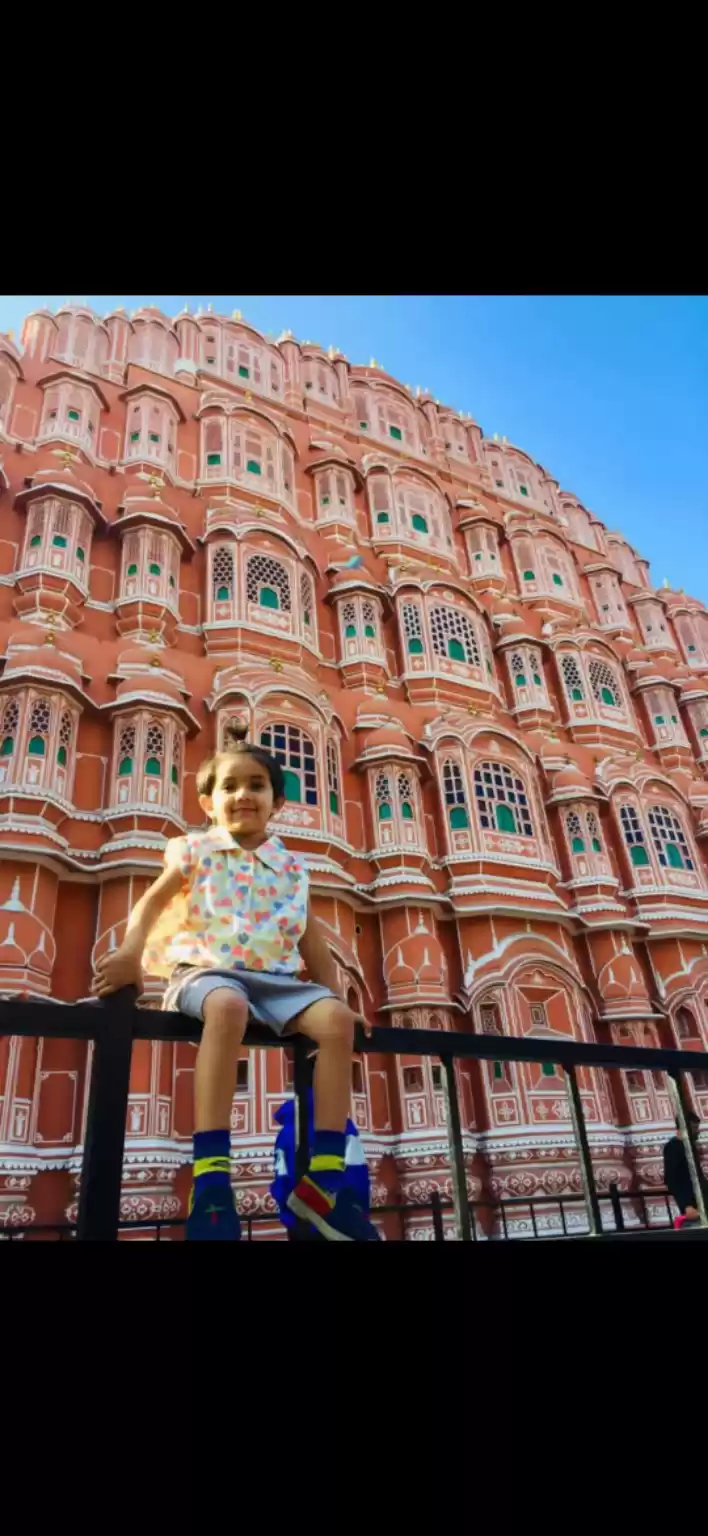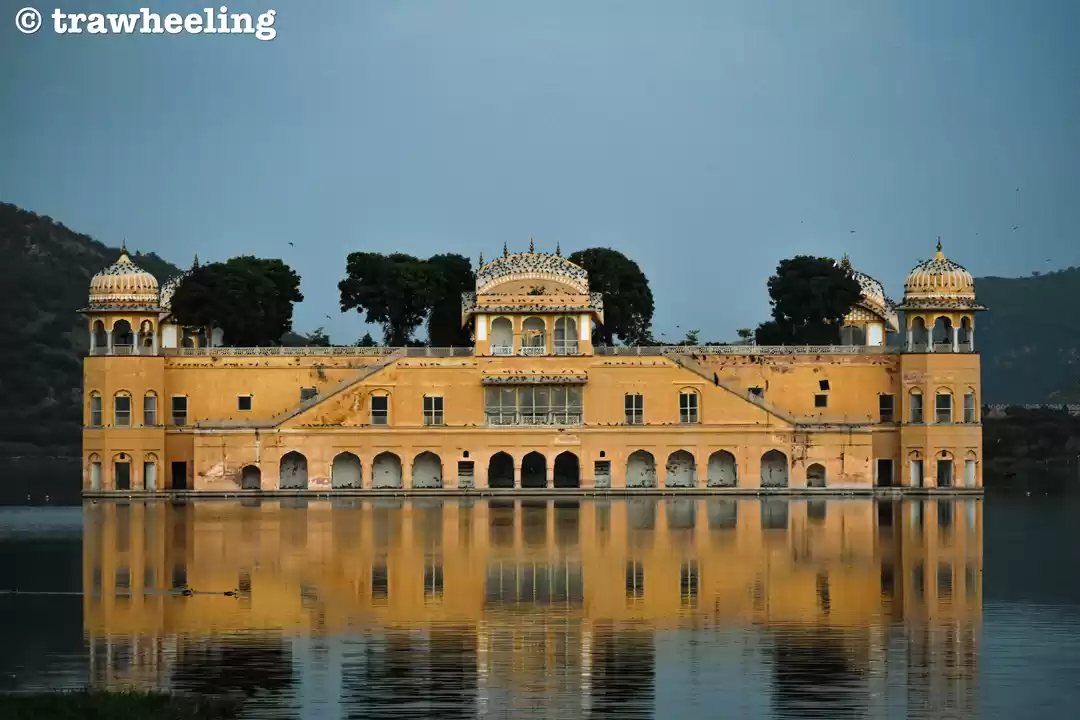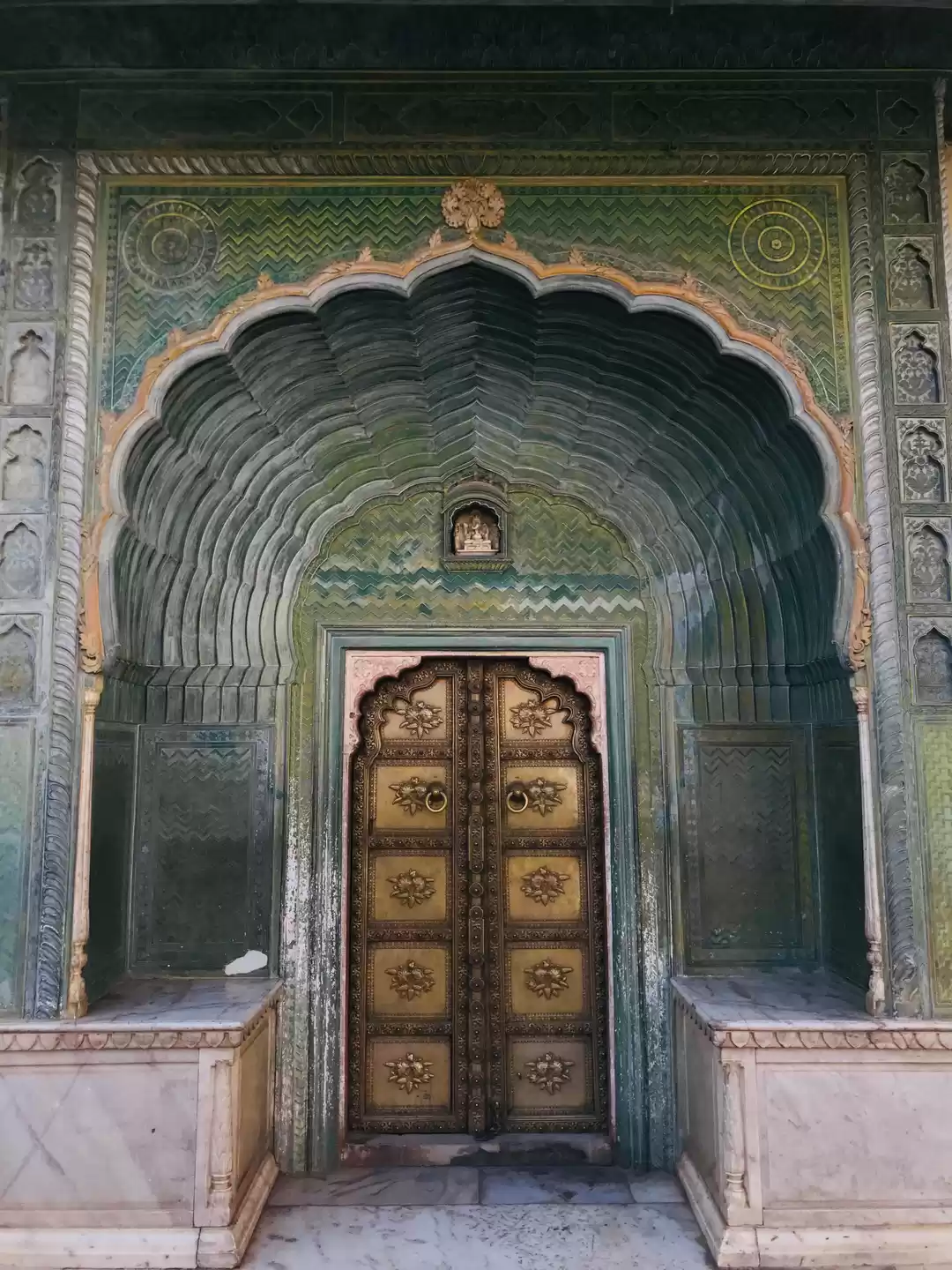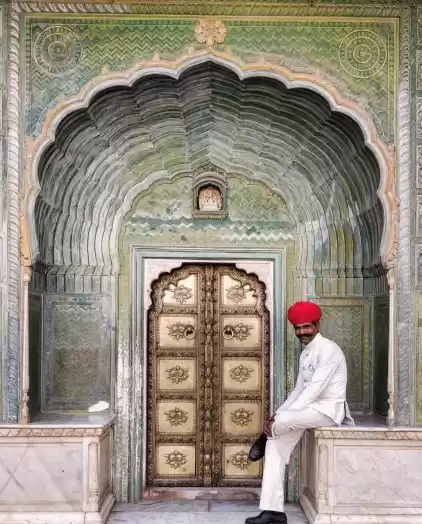JAIPUR
The biggest city and the capital of Rajasthan , Jaipur is full of history , culture and heritage.The city was created by by Jai Singh II in the year 1727 with the help of the scholar Vidyadhar Bhattacharya .I is considered to be one of the best planned city in Rajasthan . This city is made keeping in mind the vastu shastra and shilpa shastra. It is divided into 9 blocks , two of which are kept for palaces and state buildings and the rest of them are given to the public. There are 7 gates , the 3 main gates face the three directions : Eastern gate[ Suraj Pol] , Westergate[Chand pole] , Northern gate[ faces the ancestral capital Amer]. Jaipur is also called as the 'Pink City' because of the dominant colour scheme of its buildings
My journey started from Delhi in a volvo bus to Jaipur . It took me about 5 hours to reach Jaipur . Known for its opulent palaces , magnificent forts , and folklores Jaipur is a treat for any history buff.
Situated on a hilltop this lavish palace was built by Raja Man Singh I in the year 1592. It sits on the top of Aravalli hills overlooking the Maota lake which is the the main source of water supply in the palace. The entire palace is made up of red sandstone and marble and is one of the principal tourist attractions in Jaipur. This opulent fort is divided into 4 levels each having its own courtyard.
1. Diwan-i- Aam[hall of public audience], 2. Diwan-i- khas[hall of private audience], 3. The Sheesh Mahal and 4 . Jai mandir and Sukh Niwas where a cool climate was artificially created.
Amer fort is open on all days and has an entry fees of 100 INR for Indian tourists and 550 INR for foreigners.
Just a 10 minutes rickshaw ride away Jaigarh fort is situated on the Cheel ka Teela [eagles hill] of the Aravali range. This fort primarily overlooks the Amer fort and the Maota lake and was built to protect the Amer fort by Jai Singh II in the year 1726. The jaigarh fort is also connected to the Amer fort via a subterranean passage way. This was used for the protection of the royal family during wars.
This fort is also known as the 'victory fort' . The palace complex comprises of Laxmi vilas, Lalit mandir, Vilas mandir, Aram mandir.It is most famous for the cannon also known as ' Jaivana' which is said to be the world's largest cannon on wheels. This fort is open on all the days and has a small hotel and a wax museum for display.and the entry fees is 35 INR for Indians and 85 INR for foreigners.
Nahargarh fort which means the 'abode of tigers' stands on the edge of the Aravali range. It was built in the year 1734 by Maharaja Sawai Jai Singh II and was used only for retreats . A lot of peace treaties were also signed at nahargarh .
Visiting the Nahargarh fort is a must as it gives you a mesmerizing view of Jaipur city. The entry fees is 200 INR for foreigners and 35 INR for Indians.
Also known as the 'water palace' it is located in the middle of the Man Sagar lake. This palace was renovated in the 18th century by Jai Singh II who built chhatris and cenotaphs around the palace , each cenotaph was dedicated to one of the valiant rajas like MAdho Singh, Pratap singh etc.
Sidewalks are built around this lake where you can just hang around and enjoy the calm and serene vibe of the place . This place also becomes very busy in the evening when there are street vendors everywhere selling handicraft items , food items etc.
City palace is located in the heart of the pink city . It includes Chandra Mahal , Mubarak Mahal and many other buildings and was the seat of the Maharaja of Jaipur.
This palace was built between 1729 - 1732 by Jai Singh II and has an array of courtyards, gardens and buildings .
The palace has two main mahals namely the Chandra Mahal and the Mubarak Mahal . The Mubarak Mahal or the Auspicious palace is converted in to a museum and is open for tourists to visit . It has a large collection of textiles and garments worn by Maharajas and Maharanis of the Rajput clan. The architecture of this place has a mixture of Islamic Rajput and European styles and hence the intricate work is a treat to the eyes. The Chandra Mahal is the biggest building inside the City Palace . It is a 7 storey building of which only the first two floors are open to tourist and are now converted into a museum. The the rest of the floors are given to the royal family descendants who still live here.
The city palace is open on all days and has ana entry fees of 500 INR for foreigners and 190 INR for Indians. It is a must visit for anyone who wants to know the history of jaipur .
Made in the 18th century by by Maharaja Jai Singh II the primary purpose of this place was to predict movements of sun , moon and planets and compute astronomical tables.
Made in the year 1799 by Maharaja Sawai Pratap Singh and designed by Lal Chand Ustad Hawa Mahal aka The palace of Winds is a huge structure which is made of pink and red sandstone. The structure of this palace resembles a beehive and has a total of 953 windows or jharokhas each having some lattice work. The main purpose of this palace was for women to see the on going proceedings on the road. Thus, the lattice work was built in each windows to hide their faces from the public but at the same time these women could enjoy the proceedings. The architecture of the place is such that due to ' venturi effect ' the entire area is cool in summers hence it gets the name as palace of winds.
Apart from the majestic forts and the beautiful palaces Jaipur is also known as a shoppers paradise . From mojdis, bandhani dupattas to colourful kurtis and some wonderfully carved home decor items Jaipur is a place where you can find all these. Some of the must visit market places in Jaipur are ' The Nehru Market', 'Chandpole market', 'Johri bazar' , 'Bapu bazar' etc. One can also indulge in delicious Rajasthani cuisine when shopping .
JODHPUR
Jodhpur the second largest city of Rajasthan was founded by Rao Jodha in 1459 . After conquering the nearby area he renames the entire area as Marwar. Jodhpur is also known as the 'Blue city' , or the 'Sun City' because majority of the houses in Jodhpur are painted blue so as to keep the interior cooler in summers.
Jaswant Thada is a Cenotaph made by Maharaja Sardar Singh in 1899 the memory of his father Maharaja Jaswant Singh. This place is used as a cremation ground for the people of the royal family of marwar. This area comprises of a lake , garden and a main building. The entire structure is made of light marble so that it reflects sunlight and it looks as if its shinning.
Ghanta Ghar is a huge clock located in the middle of a market in Jodhpur. This clock dominates the entire market. IT was built by Maharaja Sardar Singh and hence the market is also famously known as the Sardar market. This market is famous for handicrafts , jewellery items , and authentic Rajasthani food items .
In the late 1920's when Jodhpur was hit by a drought for 3 consecutive years Maharaja Umaid Singh decided to built a lavish palace to provide employment to the distraught farmers. The making started in the year 1929 and was over in 1943. This palace was built on top of the Chittar Hills. The architecture of this palace was of Indo- Deco style and yellow- golden sandstone was used in tis making . THe palace is divided into 3 main buildings - one is the residence for the royals, the second is the taj hotel , and the third is converted into a museum for the 20th century history of the royals.
Built in the 1460's by Rao Jodha the Mehrangarh Fort is one of the largest forts in India. The fort has total of 7 gates and is located 410 feet above the city. The walls of the fort are lined with intricate design and some of the most amazing work. It is also considered to be one of the well stocked museums in Rajasthan . You can also spot peacocks in this fort if you visit this in the right season. A lot of famous movies were shot in this fort one of them being the Salman Khan starrers ' Hum Saath Saath hain'. This view provides a great view of the city and is a must visit point to see the sun setting over the horizon.
One can also enjoy locals playing music instruments in the evening at the entrance of this fort . I spent my evening sitting at the step well eating kachoris and dal bati churma and just soaking in the whole Jodhpur vibe .One can also chill and relax at the famous Balsamand lake. The next morning I left for the airport to catch my flight back to Mumbai.






